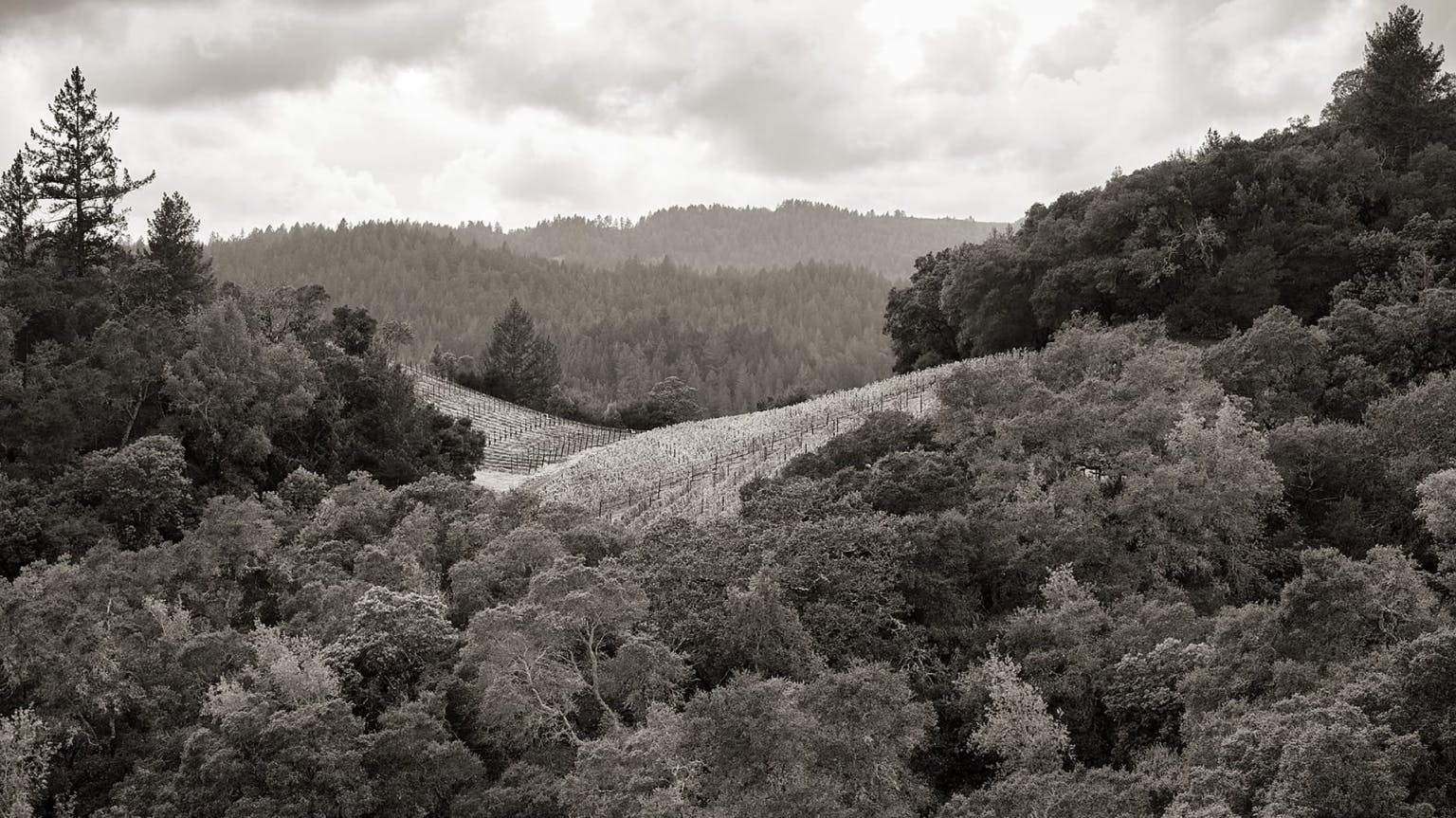Much has been written about Promontory. The property was discovered by Bill Harlan in the 1980s, hidden behind a ridgeline in Oakville, and its story – one that almost feels mythical – has been told many times (including by us).
Those stories, however, don’t prepare you for standing in this vineyard. “The territory”, as the team refers to the estate itself, is totally hidden from view – a good 10-minute drive from the winery (which looks out over the Harlan Estate vineyards), tucked to the south, over the hills from Dominus, found via a warren of dirt-tracks that cut through the forest, until – suddenly – you’re there.
Perched at the top of just one of the various parcels of vines, Cory Empting (Managing Director of Winegrowing) stops the truck as our jaws drop. We scramble to get out, blinking in the peaceful sunshine that beats down on an enchanting, untamed idyll.
“There’s a quality to the silence out here,” Empting says – breaking the quiet that we’ve been soaking in. As the crow flies, Promontory isn’t far from Harlan Estate – yet the difference is, in Empting’s words, “kinda scary”. Fault lines make for a unique mix of soil types – sedimentary, volcanic and, most importantly and rare for Napa, metamorphic. Plots of vines are sparsely scattered across the wild, forested mountains, the undulating, varied slopes offering an almost endless range of aspect and microclimate. (As one alum told me, laughing, “It’s beautiful – but a total b**** to farm.”) The elevation is higher than at Harlan Estate – with the lowest point at Promontory the equivalent altitude of the highest point at its sibling property – making it generally cooler. Harlan Estate is manicured, while Promontory has a rawness about it – a sense that it isn’t, and never will be, totally domesticated.
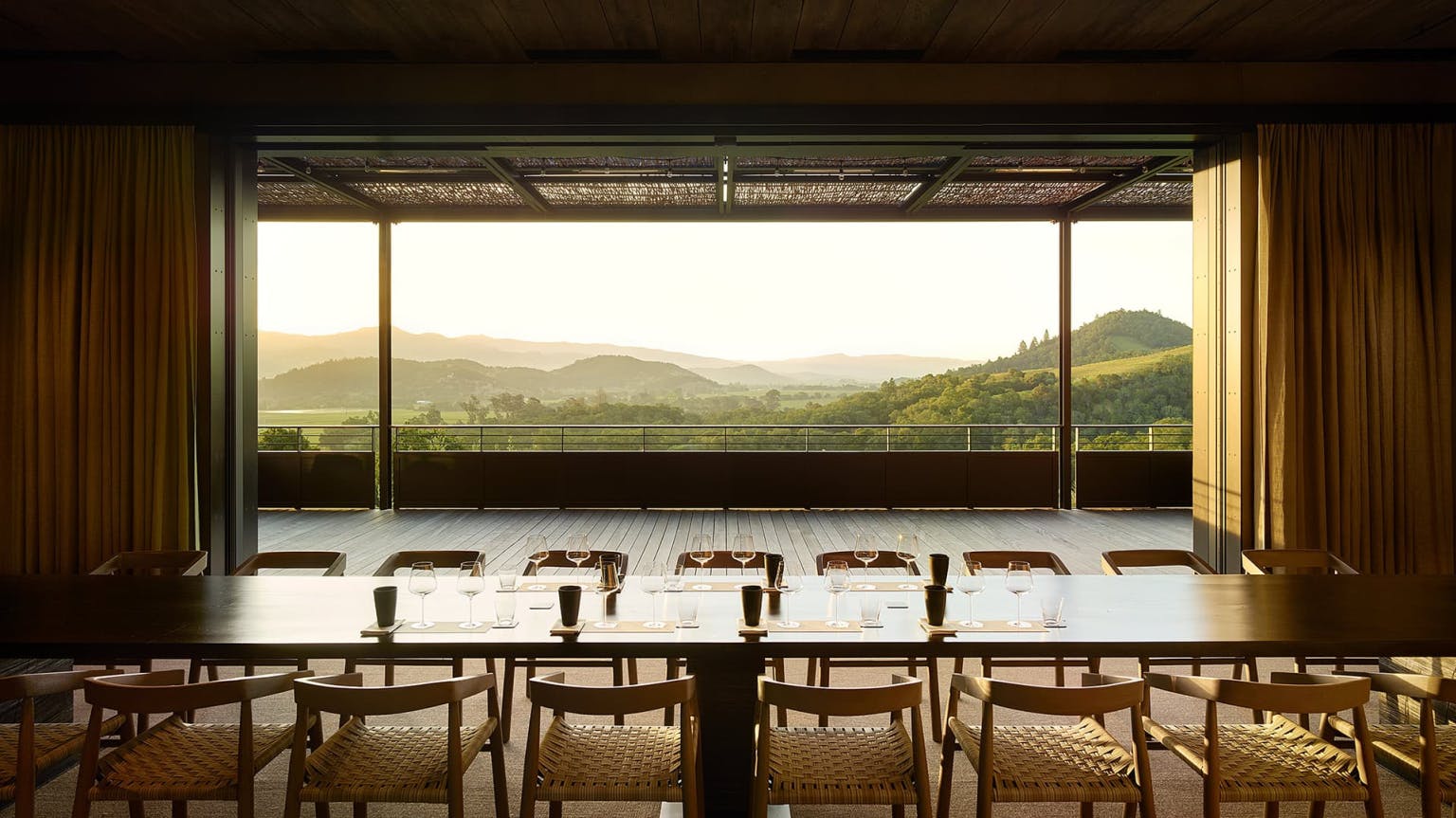
It's taken a long time to get here. Bill Harlan’s quest to create a Californian rival to Bordeaux’s First Growths (started in the 1970s) had kept him hunting for land, enough that would allow him to produce the same volume as the Left Bank’s most grandiose addresses. He bought his first 40 acres in 1984, the founding stone for Harlan Estate, and has continued tracking down special vineyards ever since, first for Harlan, then BOND and Promontory.
Although he’d first identified the location for Promontory in the 1980s (while hiking through this part of the valley), the property was developed by Girard Winery in the meantime, and he didn’t have the chance to buy it until 2008. Bill got a call that it was going on the market – and that’s when he rang up Will (his son, now Managing Director for the Harlan family of wineries) and Empting. “Then the economy started tanking,” Empting says – and suddenly the property that had been a stretch became increasingly affordable as its price dropped. The decision to buy was easy. But there was no reference point for the project, no historic bottlings to judge against, just a feeling about the place, and its potential.
“It was the wild west when we got out here,” Empting explains. The vineyard was in terrible shape – trees had been cut down and left where they fell. There were weeds growing taller than the vines. It had been left to become truly feral. There were even end-posts suggesting a row of Pinot Noir that was clearly Cabernet Sauvignon, while there were Cabernet Sauvignon clones that looked like nothing they’d seen before.
They committed to farming the site for three years before changing anything, so they knew what they were dealing with. But it soon became clear that the soils had been destroyed, robbed of organic matter, the vines emaciated, producing truncated shoots.
To date, they have replanted half of the 80 acres of vines. And the redevelopment work has been substantive, including un-doing terracing. They worked with superstar consultant agronomists Claude and Lydia Bourguignon (the first in the US to do so) to help regenerate the soils. But the philosophy here is ultimately Fukuoka-inspired: “How can we do one thing less? … That’s our church,” says Empting.
Fifteen acres have been replanted, rather unconventionally for Cabernet Sauvignon, untrellised – goblet-trained. This is partly because the metamorphic rock is so fractal that a unified hedge just didn’t make sense. Air flows in all directions, the sun hits each vine differently, they’re resilient for dry-farming and it allows the team to pick and move in any direction in the vineyard.
Even more unusually, they’re planting rootstocks by themselves, grafting only once they’re three or four years old – when deemed ready. “I’m a Montessori parent,” Empting jokes, referencing what he describes as his “mixed pace” vineyards, letting each vine develop at its own rate. And this sense of responding to and working with, rather than against, the vines is key.
In a move that’s incredibly rare for hillside or mountain sites in Napa, their goal is to dry-farm. While the inspiration might have been wine quality (looking for more concentrated, balanced fruit), it is now ultimately about long-term survival in a changing climate. “We’re not going to have the water,” Empting says frankly.
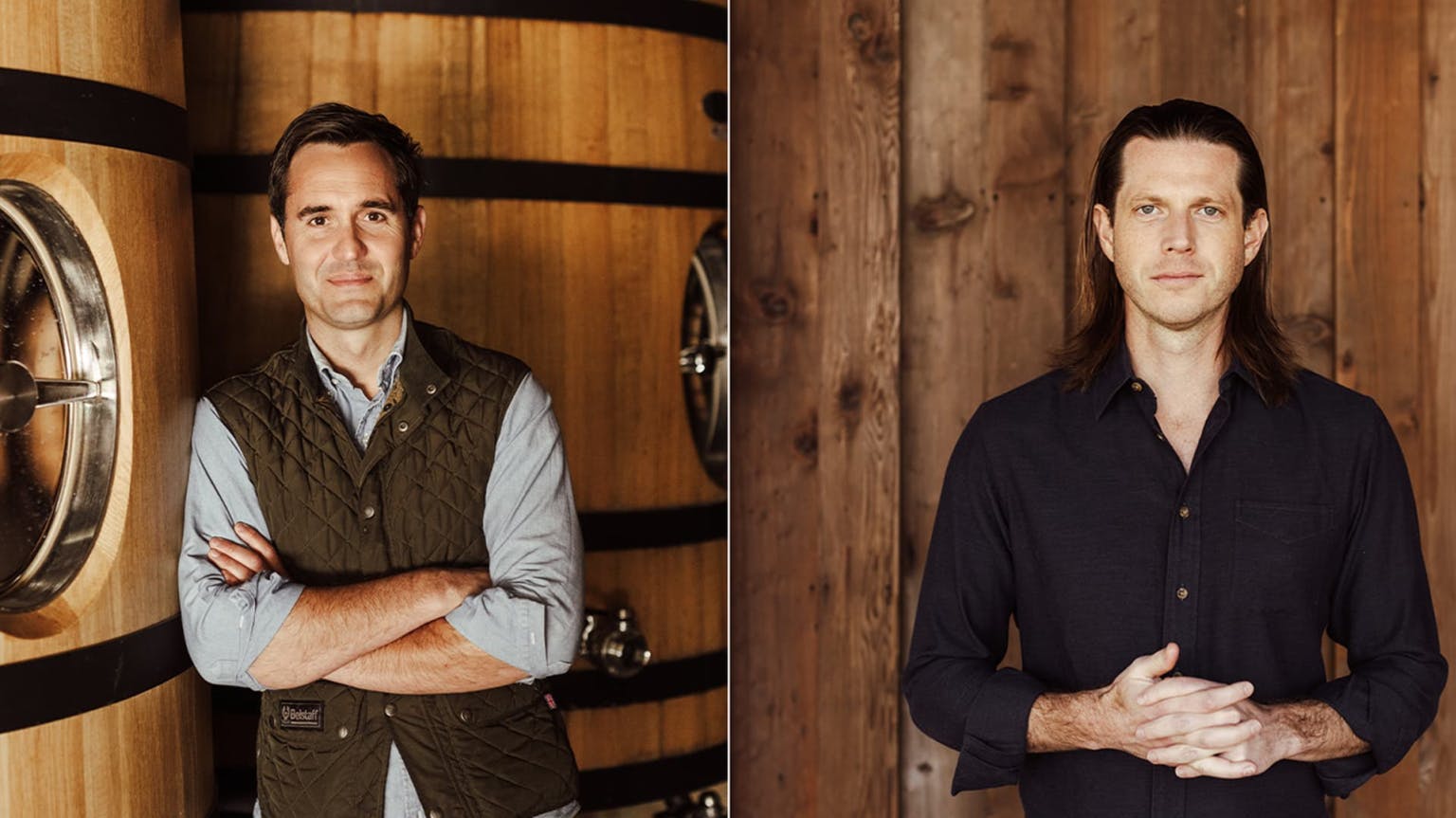
Convention suggests that each vine in the ground acts like a straw, sucking water from the soils. But, as Promontory have proven through experiments, it is not that simple – relating to the number of leaves on the vine, as well as its age, among other things. In fact, they have found that higher density plantings are easier to dry-farm.
To help avoid irrigation, they focus on respecting the vine energy – that means they don’t hedge or leaf-pull, and will only green harvest if they absolutely must (when nature throws them a curveball) – pruning to what they want the vine to grow, avoiding wasting any inch of the plant’s efforts. The resulting clusters are tiny, with yields reaching a maximum 38hl/ha, but often a mere 20hl/ha.
Cover crops and permanent grass cover, as well as grazing, have been key to repairing the soils. They’re still having to use a little bit of compost in some areas, Empting confesses almost guiltily – something he considers “a sign of imbalance”. Animals are a key part of “holistic farming”, Empting says, and he’d love to have chickens in the vineyards – “If the coyotes didn’t see them as a free meal,” he jokes. They’ll bring sheep in to graze early in the season, so that the cover crop has time to grow back. The regrowth can then be trampled naturally by the vineyard team as they work – operating as a rustic form of crimping or rolling. This aids water retention, the natural layer of “thatch” keeping the soils cool and preventing evaporation.
If it’s not already clear, this isn’t a standard vineyard or estate – or, more accurately, family of estates. This is all part of Bill Harlan’s original vision, a 200-year plan to create a wine dynasty to match those of the Old World. The level of detail, effort and expense that goes into BOND, Harlan and Promontory is remarkable. They have a team dedicated to Research & Development – ensuring that they are at the forefront of viticulture and vinification, pushing any and every boundary in the name of quality.
One key element of this is their Vine Masters program – elevating what might historically have been seen as blue collar work to the skilled profession it really is.
The large majority of vineyard workers in California are of Mexican origin (some statistics suggest as high as 95%). There’s reason for this, with a long history of seasonal-working that stretches back to 1917, yet there’s often a division between vineyard and winery – a division that the family is working hard to broach.
The Vine Master program was first introduced at Harlan. The principle is not alien – a “Vine Master” is dedicated to a specific block, giving a sense of ownership, yet also meaning they know that block inside out. But – and this is what sets Harlan apart – to earn that responsibility (and it is a significant responsibility when the wine sells for upwards of £800 a bottle), the Vine Master has to go through a modular education program (developed in-house), passing both theory and practical exams. The Vine Masters can then take ownership for a block, and have the freedom to do what is required for their plot of vines. In what feels distinctly Californian and ever-so-slightly hippy-inspired, they’re also encouraged to, for example, hike through the surrounding hills, helping them think laterally.
Empting explains how one of the Vine Masters was sitting in his block on a break, looking up at a tree, and realised that trees naturally find their balance by dividing the diameter of their trunk fairly at each divide – only if there is sufficient girth will it split. He took this concept and pruned his block accordingly, only leaving multiple shoots where the vine could handle it. In the dry 2020 vintage, his vines were the only ones that reached the top wire (of the trellis), with the others all struggling. His methodology was rapidly implemented throughout the vineyard.
The vineyard supervisor is more like a coach than a manager, and the vineyard work is more integrated with the final product. For example, the pruning process starts with tasting the wine from the previous vintage, so they can align on the energy of the vines and any challenges, before taking their shears to the vine. “You can’t prune a vine without thinking what it tastes like,” Empting says – yet that is what many vineyard workers will have to do.
This responsibility isn’t something that everyone wants – but skilled labour is, along with water, key to the future in California.
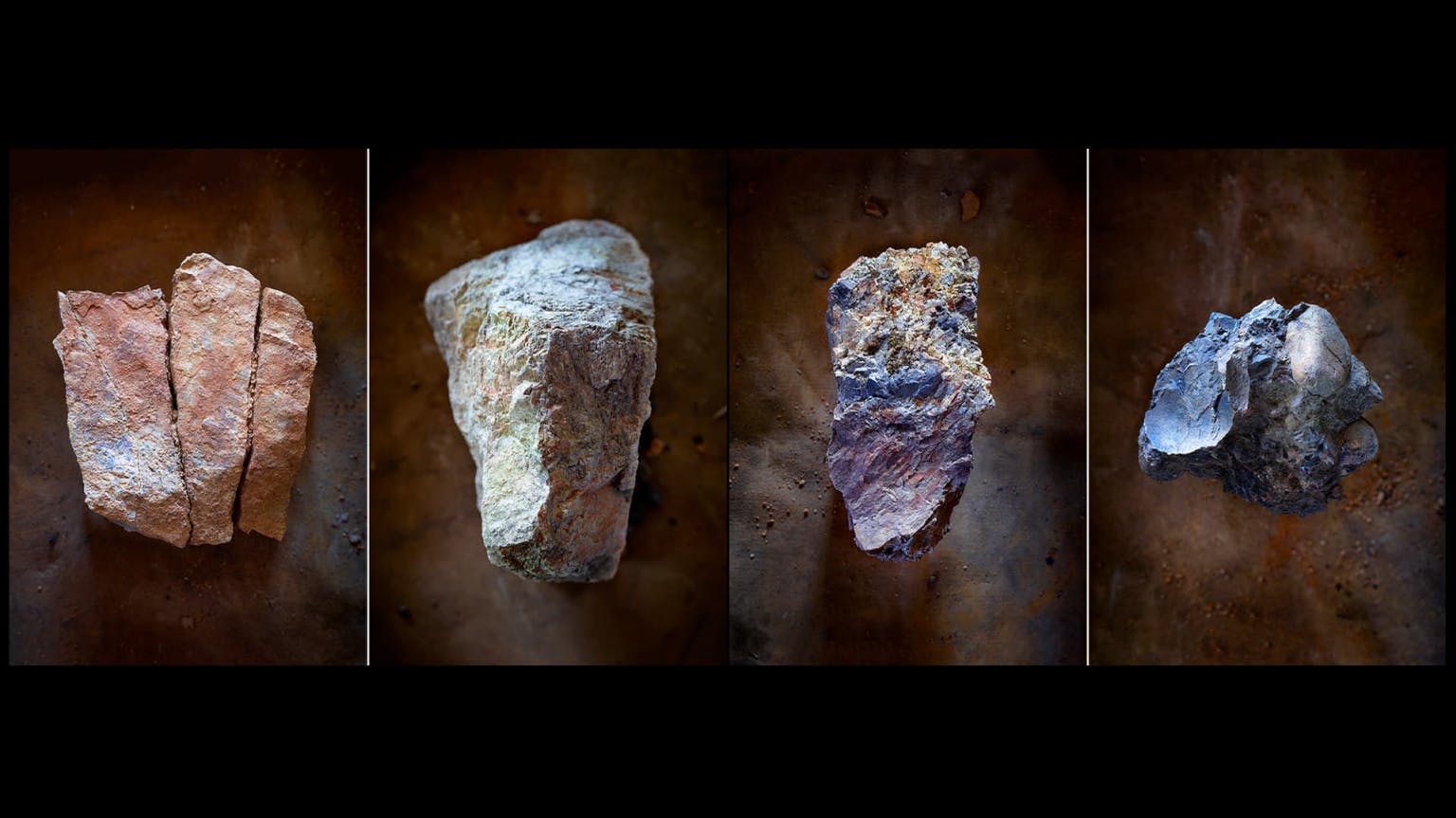
Empting expects the valley floor to be entirely mechanised in the imminent future – and if that’s the case, the question is: “How are you going to retain the talent that you have – and gain more?” he says. While originally they didn’t want to give each Vine Master too much land, they’ve found they work almost 40% faster than a crew – able to work more efficiently, doing what is needed when it’s needed, saving on the transition time within plots.
There’s been a constant evolution in the winery as well, inevitable as they learn more about this remarkable place, and realise the potential of its terroir. The challenge is to tame the significant phenolics – and the shift here fits with that familiar pendulum swing, with a move towards elegance. As with the vineyard, the goal is to do less not more – something that isn’t always easy. “We wait all year to turn grapes into wine,” Empting explains – the excitement sometimes becoming overzealous.
While soil health was, as Empting describes it, “the first hurdle”, David Cilli (Winemaker at Promontory) had been doing much in the winery, gradually dialling in the extraction, with shorter macerations and cooler temperatures (with a maximum of just 26˚C), halving the number of pump-overs. The wine is now mainly fermented in concrete (all with indigenous yeast) and aged in Stockinger foudre – ranging in size from 10 to 60 hectolitres – for 30-36 months.
When they first made the wine, they thought that they’d want and need to separate out the different blocks – since they had such varied profiles. They decided they were willing to sacrifice as much volume as was needed to make the best wine possible for the first vintage, and set about making various micro-blends, as well as one that included everything. The whole was so much more – its harmony so much more appealing. “They need each other, in a weird way,” Empting explains.
Until now, the wine has been made exclusively with the old vines, those that were planted when they arrived, with the new vines not yet mature enough (the young-vine fruit has instead been used for The Mascot). The 2022 will be the first vintage to include some of their earliest replants, which are now 10 years old.
While shifts here have mainly been gradual, 2020 was a significant moment. The first wildfire took hold on 18th August, although it was across the valley – far enough away for there to be no urgent threat, but the team was (especially with 2017’s fires fresh in their memory) on edge. Empting recalls spending time driving up and down the valley watching what was happening. They grouped together and decided to start picking on 22nd August – a good two weeks earlier than normal. They weren’t certain it was the right decision, but also weren’t prepared to risk everything to wait. Two weeks after they finished, the Glass Fire swept through the valley. Anyone that hadn’t picked was at significant risk of smoke taint.
Nature might have forced their hand, but it was a push they needed. The resulting wine stunned them all. It’s a world away from the high-octane reds that Robert Parker favoured – and any Napa stereotype. This is a bright, pure and elegant expression of site that sits at around 13%. And while the team’s fear was that it might not have the tannic depth of a true “Grand Cru” – a wine destined to be cellared – that is simply not the case.
They realised they didn’t need those extra two weeks on the vine for phenolic ripeness. The dry growing season had meant the vine only had a small crop to ripen, helping them out, but the year totally shifted their perspective. In 2021, they picked on the same date. In 2022 – a noticeably hot and dry year – they picked even earlier.
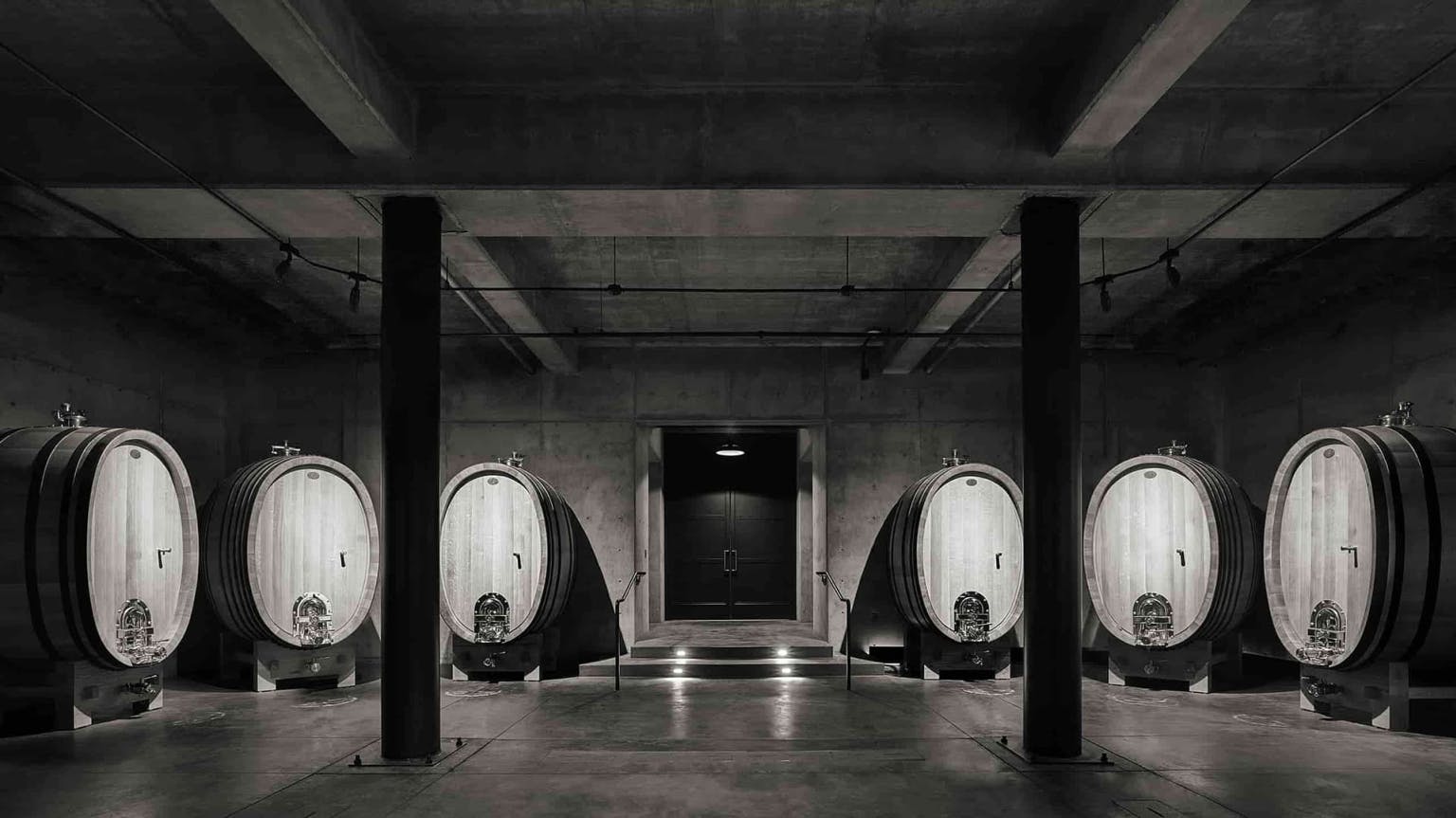
Tasting the 2020 alongside the 2016, ’17 and ’18, the difference is drastic – although the progression is there in the earlier vintages. It marks a sea-change for the estate – one that may divide pundits. But the 2020 matches their vision of this place: while they think of Harlan as a wine of gravity, Promontory is a wine of “lift”.
The Harlan family’s wines don’t come cheap – but you aren’t just paying for good wine (and it is, undoubtedly, very good). Yes, it’s a smart winery, with the very best equipment. But the money isn’t going on new barrels and expensive consultants each year, it’s being invested in the people, place and practices that guarantee its legacy. The 2018 has only just been released, so the 2020 won’t hit the market until 2025. But like anything these visionaries do, it will be worth waiting for.
Tasting Promontory
Will Harlan describes the 2016 vintage as one of the first wines that they felt allowed them to compete on a global stage. Still incredibly youthful, it’s somehow almost approachable yet has significant structure behind. There’s a plush richness to the fruit, a firmness and depth to the tannins that needs time, yet a vibrancy too. It’s just starting to become more supple, yet the phenolics grip onto the finish, drying it out very slightly. The fruit is starting to mellow, mingling with savoury tones. Significantly more weight than the other vintages.
Deeper and darker, the 2017 shows an intensity and firmness – its framework almost aggressive after the 2016. The structure is boxy, yet also refined, and starting to meld together with the bright, fresh fruit. With air the wine shifts from black to red fruit, relaxing into itself. Fruit reverberates on the mouth-watering finish.
The 2018 confirms the direction of change. Although on paper the wine looks similar to 2016 (in terms of analytics), this is significantly different – offering a transparency and vibrancy. Empting describes it as “athletic” – a fitting way to describe a wine that feels lithe. The fruit sits on the red spectrum, with super-fine velvet tannins forming a chiselled, linear structure. There’s a lift and florality to the nose, complementing the long, pure palate.
2020 Promontory
This is a wine of amazing precision and perfume. A pivotal vintage for the estate, picked two weeks earlier than normal and before fires swept through the valley, it’s a stunning wine. Extraction was gentler and the alcohol is around 13%. It’s a wine of brightness and texture – a fine, chalky, powdered grip of tannins that complements the seamless fruit. The nose shifts with florals and earthier minerality, a savoury, saline edge to the crunchy fruit and juicy acidity. There’s purity and delicacy, with a finesse that is truly remarkable.
